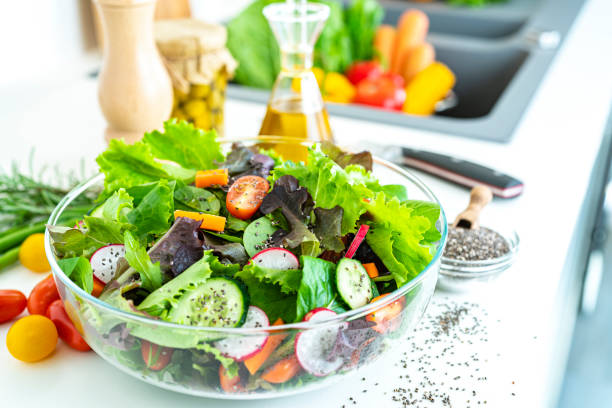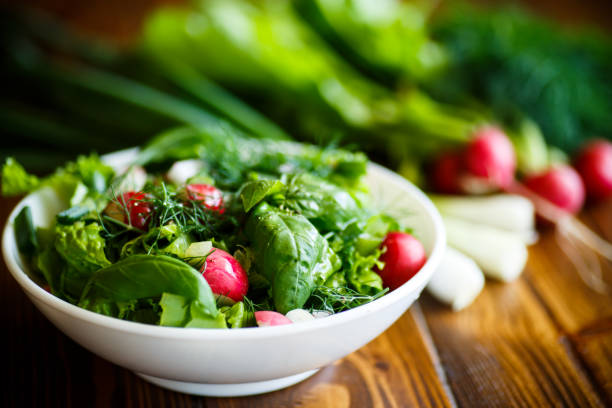A garden salad is a popular dish that is often considered to be a healthy option when it comes to meal choices. However, the number of calories in a garden salad can vary depending on the ingredients used. In this article, we will discuss the calorie content of a typical garden salad, as well as the factors that can affect the calorie count.
First, it is important to understand that a garden salad is made up of a variety of different ingredients, including lettuce, tomatoes, cucumbers, onions, and other vegetables. These ingredients are relatively low in calories, with lettuce, for example, containing only 5 calories per cup. Tomatoes and cucumbers also have a low calorie count, with tomatoes containing around 22 calories per cup and cucumbers containing just 16 calories per cup.
However, the calorie count of a garden salad can increase significantly when additional ingredients are added. For example, if a salad contains cheese or nuts, the calorie count will increase. One ounce of cheddar cheese contains 114 calories and one ounce of almonds contains 164 calories. Similarly, if a salad is topped with a high-calorie dressing, such as ranch or thousand island, the calorie count of the salad will also increase. A 2 tablespoon serving of ranch dressing contains around 140 calories.
A basic garden salad typically contains lettuce, tomatoes, cucumbers, and onions. These ingredients are all low in calories, with lettuce being the lowest at just 5 calories per cup. Tomatoes and cucumbers also have a low calorie count, with around 20 calories per cup. Onions, while slightly higher in calories at around 30 calories per cup, are still considered a low-calorie food.
When building your salad, it’s important to watch out for high-calorie toppings. Croutons, for example, can add up to 150 calories per cup. Cheese can also be a major contributor to the calorie count of your salad, with around 100 calories per ounce. Bacon bits and nuts, such as almonds or pecans, can also add a significant amount of calories.
Another factor to consider when determining the calorie count of your salad is the dressing. A typical vinaigrette dressing has around 100 calories per 2 tablespoons, while creamy dressings can have up to 200 calories per 2 tablespoons. To keep the calorie count of your salad low, opt for a vinaigrette dressing or use a small amount of dressing and toss the salad well.
When it comes to portion size, it’s important to keep in mind that a typical serving size for a garden salad is around 2 cups. Eating a larger portion can significantly increase the calorie count of your salad.
Another factor that can affect the calorie count of a garden salad is the portion size. A small salad may contain fewer calories than a large salad. Additionally, if a salad is consumed as a main course rather than as a side dish, the calorie count will be higher.
In general, a garden salad made with a variety of fresh vegetables and a low-calorie dressing is a healthy option that can fit into a calorie-controlled diet. However, it is important to be mindful of the ingredients and portion size when consuming a garden salad to ensure that the calorie count remains low.
In conclusion, a garden salad can be a healthy and low-calorie option, but the number of calories can vary depending on the ingredients used and the portion size. To keep the calorie count low, it is best to stick to a variety of fresh vegetables and a low-calorie dressing. Additionally, it’s worth considering the salad as a side dish rather than a main course. By being mindful of these factors, a garden salad can be a delicious and nutritious addition to any diet.

 Home
Home Health
Health Diet & Nutrition
Diet & Nutrition Living Well
Living Well More
More












